Topic outline
-
In this unit you will learn about:
- Concept of classification
- Importance of classifying living things
- How living things are grouped according to their similarities and differences
- Different types of classification systems
- Major groups of living things
- Ranks of classification
- General and distinctive features of viruses
- Structure of viruses
- General and distinctive features of bacteria
- Characteristics of pathogenic and non-pathogenic bacteria
- General and distinctive features of the Kingdon of Protoctista
- Structure of Amoeba, Euglena, and Paramecium
-
-
Concept of Classification
The evolution of life on Earth over the past 4 billion years has resulted in a huge variety of species. For more than 2,000 years, humans have been trying to classify the great diversity of life. The science of classifying organisms is called taxonomy. Classification is an important step in understanding the present diversity and past evolutionary history of life on Earth.
All modern classification systems have their roots in the Linnaean classification system. The system was developed by Swedish botanist Carolus Linnaeus in the 1700s. He tried to classify all living things that were known at his time. He grouped together organisms that shared obvious physical traits, such as number of legs or shape of leaves.
The Linnaean system of classification consists of a hierarchy of groupings, called taxa. Taxa range from the kingdom to the species. The kingdom is the largest and most inclusive grouping. It consists of organisms that share just a few basic similarities. Examples are the plant and animal kingdoms. The species is the smallest and most exclusive grouping. It consists of organisms that are similar enough to produce fertile offspring together. Closely related species are grouped together in a genus.
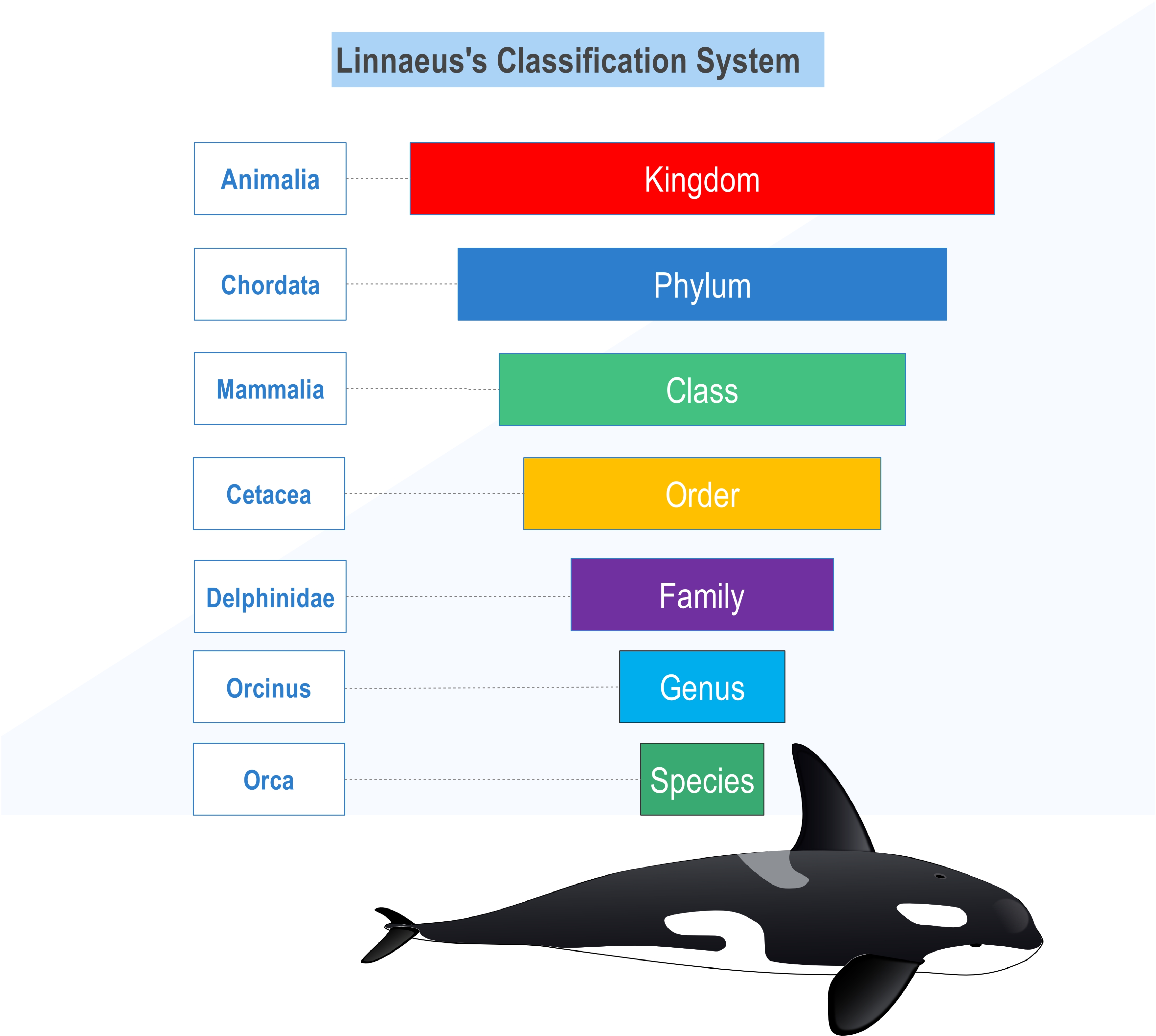
Image: Emma Harrage. CC BY
The classification of human beings is shown below:
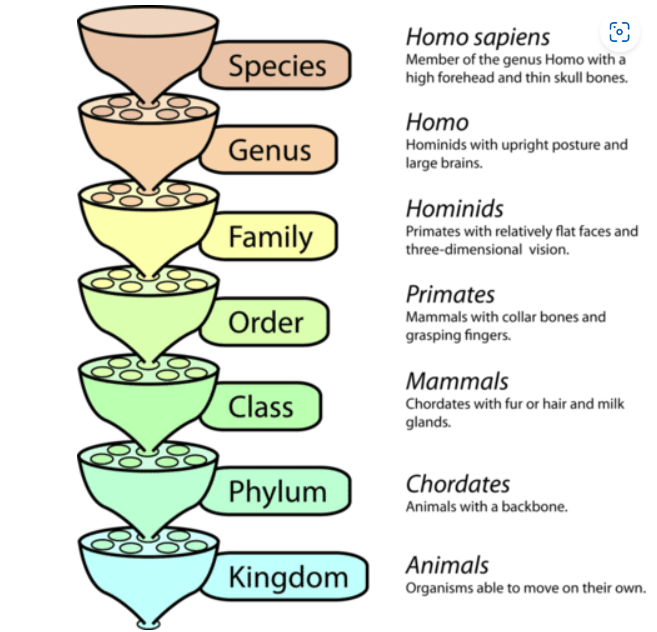
Image: CK-12 Foundation. CK-12 License
The sequence of classification is: Kingdom, Phylum, Class, Order, Family, Genus, Species.
Credit: Ricochet Science. Classification of Life
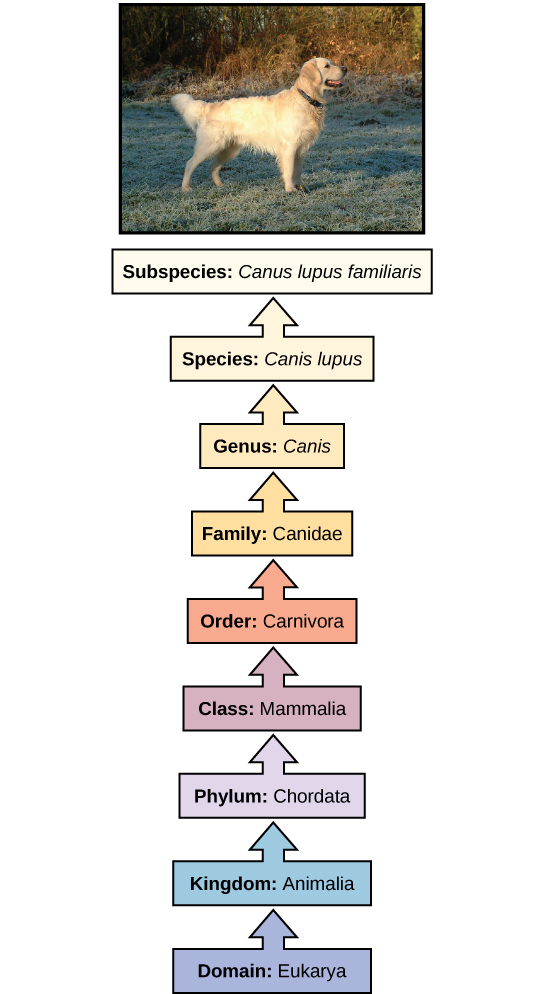
Image: Lumen Learning. CC BY 4.0
The taxonomic classification system uses a hierarchical model to organize living organisms into increasingly specific categories. The common dog, Canis lupus familiaris, is a subspecies of Canis lupus, which also includes the wolf and dingo.
The taxonomic classification system uses a hierarchical model. Moving from the point of origin, the groups become more specific, until one branch ends as a single species. For example, after the common beginning of all life, scientists divide organisms into three large categories called domains: Bacteria, Archaea, and Eukarya. Within each domain is a second category called a kingdom. After kingdoms, the subsequent categories of increasing specificity are: phylum, class, order, family, genus, and species.
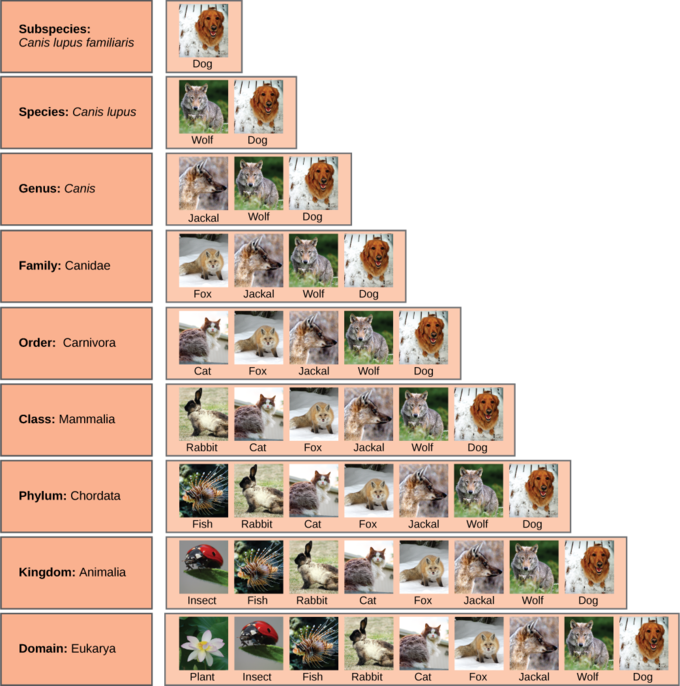
Image: Lumen Learning CC BY 4.0At each sublevel in the taxonomic classification system, organisms become more similar. Dogs and wolves are the same species because they can breed and produce viable offspring, but they are different enough to be classified as different subspecies.
The full name of an organism technically has eight terms. For dogs, it is: Eukarya, Animalia, Chordata, Mammalia, Carnivora, Canidae, Canis, and lupus. Notice that each name is capitalized except for species and that genus and species names are italicized.
Scientists refer to an organism only by its genus and species, which is its two-word scientific name, in what is called binomial nomenclature. Therefore, the scientific name of the dog is Canis lupus.
Subspecies are members of the same species that are capable of mating and reproducing viable offspring, but they are considered separate subspecies due to geographic or behavioral isolation or other factors.
Dogs actually share a domain (Eukarya) with the widest diversity of organisms, including plants and butterflies. At each sublevel, the organisms become more similar because they are more closely related. Historically, scientists classified organisms using physical characteristics, but as DNA technology developed, more precise patterns have been determined.
Credit: Fuse Schools - Global Education. Classification
-
-
-
Recent genetic analysis and other advancements have found that some earlier classifications do not align with the evolutionary past; therefore, changes and updates are made as new discoveries occur.
Three-domain system
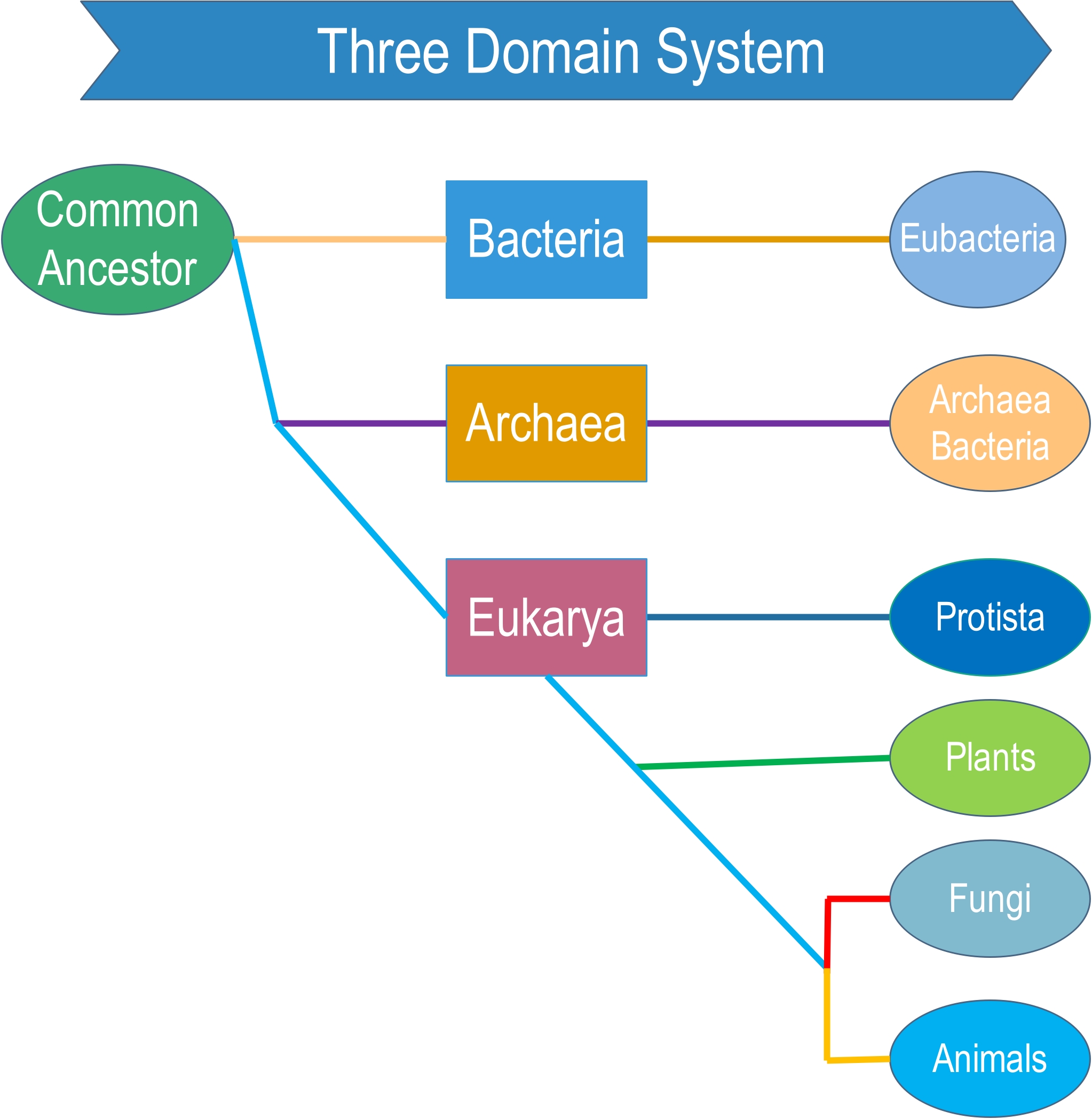
Image: Emma Harrage. CC BY
Classification systems have continued to be developed by other scientists, such as Carl Woese who developed the three-domain system. This is based on evidence now available from chemical analysis.
The updated system divides organisms into:
Archaea (primitive bacteria usually living in extreme environments)
Bacteria (true bacteria)
Eukaryota (including protists, fungi, plants, and animals)
-
-
-
-
-